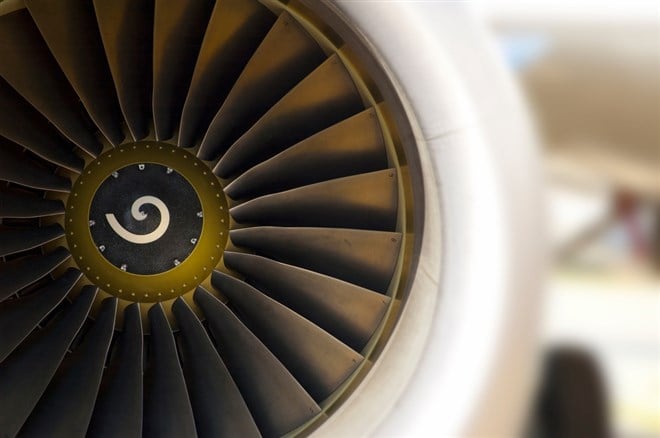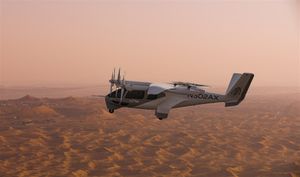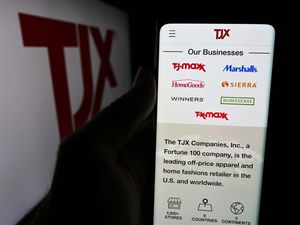
The global disruptions to travel brought on by enforced lockdowns during the COVID-19 pandemic have had their fair share of negative effects on many industries. However, air travel and the infrastructure supporting its volume may have taken the cake.
As entrenched as a company may be within the economy, with established lucrative operations and a reputable household name, one small change in the downstream supply chain can cause a whole world of pain, translated into four consecutive years of operating losses. Such is the case for the aircraft manufacturing giant Boeing (NYSE: BA), which has seen its revenue and subsequent income nosedive with no new coordinates in sight, or so markets seem to think.
No more flying
The most direct and precise way to time the state of the aerospace industry demand - apart from the trends and guidance in major airline flight volumes - is to take a look at the quarterly trends in the Federal Reserve's industrial production and capacity utilization indexes. The year 2020, arguably the worst year for utilization in the industry, ended with a rate of 62.8%.
Capacity utilization is important because it tells investors the level of demand and capacity remaining within any manufacturing industry. A capacity utilization rate of 80-85% is the normal sustained rate; large deviations above or below this norm can translate to overheated demand and tight supply, or cooled demand and oversupply, respectively.
For 2021, readings ended at 73.3%, showing signs of a strong recovery in the industry. Such an advance from 2020 lows trickled all the way to Boeing's stock price during the year, with a massive 213% rally in prices. While most speculators - and namely bears - in the stock thought that this would be a fluke year, 2022 proved resilient by sustaining a year long range within 72-74.6% in the capacity utilization rate.
This three-year continuation of rising demand for Boeing's commercial planes is a surefire way to expect more business to come, especially given that oil prices have remained relatively steady, allowing air travel to pick up further.
Investors can reference these capacity utilization readings to the delivery trends showcased in the company's annual reports, which will look as the following: 2018 delivered 806 aircraft, 2019 delivered 380 aircraft, 2020 delivered 157 aircraft (right in line with the lowest utilization reading), 2021 delivered 340 aircraft and 2022 finished with 480 deliveries to be the highest delivery year since 2019 and thus supporting the push in capacity utilization rates.
Building momentum
While most industries seem to be laying off workers in order to restructure costs and remain afloat during this rising interest rate environment, Boeing has sealed a deal with Saudi Arabia valued by the White House at $37 billion USD.
Crown Price Mohammed Bin Salman has devised a plan to start and grow a rivaling airline take some market share away from Emirates and Qatar Airways. The new airline, to be named Riyadh Air, represents a purchase agreement of 39 787-9 Boeing jets, with contingencies for 33 additional aircraft and a top-up clause for 10 more if needed for the new fleet.
While this deal is valued at $37 billion USD, investors must keep in mind that bulk-purchase customers usually receive some sort of incentive in pricing matters, still this is an unquestionable move into the right direction for Boeing.
Strong guidance signals more upside
Fourth-quarter 2022 results and subsequent presentation included management guidance for the coming year. Management has made it an expectation to deliver 800 aircraft in 2025-2026, just shy of the 2018 high deliveries investors saw. Given that only a fraction will be coming from the Saudi Arabia deal, this pretty much implies that other airlines may be lined up for new orders as well, such as Ryanair (NASDAQ: RYAAY), which announced an order for 99 Max jets as they are experiencing the highest volume out of Dublin airport.
All of these developments have allowed management to expect $100 billion USD in revenue by 2025-2026, which translates to a 50.1% increase from 2022's $66.6 billion USD revenues. This growth facilitates a 10% free cash flow margin—or $10 billion USD—by the same period. Assuming the amount of shares outstanding remains the same, it would translate to a free cash flow per share value of $16.73, placing its two-year forward price-to-free-cash-flow ratio at 12.4x (a ratio interchangeable with the P/E ratio). This development and potential growth undoubtedly place a higher potential upside than the current analyst consensus.







